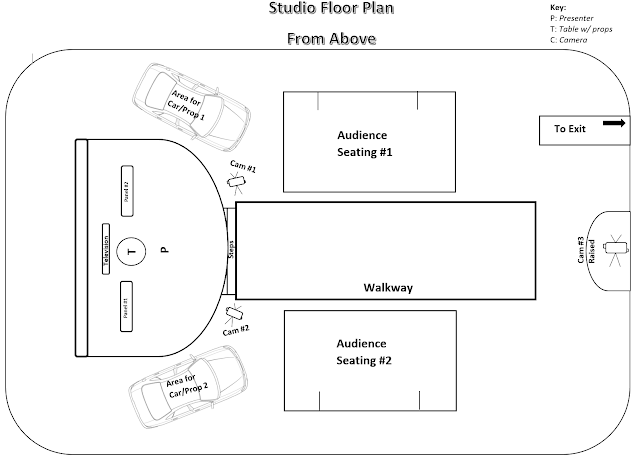Directions Unit - Vince Gilligan | Who Is He & What Am I Doing?
 Vince Gilligan (pictured right) is an American director, also known for his writing and producing work. He has worked on a number of shows in the past, forcing himself into the limelight in 2008 when his brainchild "Breaking Bad" hit people's TV screens courtesy of AMC. Gilligan directed, produced and wrote for the show and following its success continued to shine in the show's prequel spin-off series "Better Call Saul" which began airing in 2015.
Vince Gilligan (pictured right) is an American director, also known for his writing and producing work. He has worked on a number of shows in the past, forcing himself into the limelight in 2008 when his brainchild "Breaking Bad" hit people's TV screens courtesy of AMC. Gilligan directed, produced and wrote for the show and following its success continued to shine in the show's prequel spin-off series "Better Call Saul" which began airing in 2015.Gilligan began working professionally when he sent in a script to the producers of "The X-Files" after becoming captivated with the first season of the hit series of the 90's. His scripts were well received and he went on to actually write, produce and direct for the show from that point on.
Gilligan has directed a number of episodes from "The X Files", "Breaking Bad" and "Better Call Saul", including the gripping series finale of "Breaking Bad" titled 'Felina'.
His Style
Gilligan adopts a unique style to all of his work; through a number of different techniques he expresses a unique form of emotional connection between the events on screen and the audience. The flying pair of trousers in the "Breaking Bad" series premiere (pictured left) is just a single example of his outside the box thinking he applies to cinematography. Opening the entire series on this shot reels the viewer in and generates an atmosphere of panic and urgency, yet at the same time immense confusion.
 He often uses perspectives in a way to invoke empathy from those watching, especially in "Breaking Bad" in which the protagonist is by all definition of the term, an anti-hero. Slowly morphing from a feeble chemistry teacher suffering from lung cancer, to this dark and unforgiving drug-lord by the end of it's 5 season run. An example of this would be this shot, depicting Walter White (Bryan Cranston) gazing at his reflection in the blade he is considering putting to use on someone.
He often uses perspectives in a way to invoke empathy from those watching, especially in "Breaking Bad" in which the protagonist is by all definition of the term, an anti-hero. Slowly morphing from a feeble chemistry teacher suffering from lung cancer, to this dark and unforgiving drug-lord by the end of it's 5 season run. An example of this would be this shot, depicting Walter White (Bryan Cranston) gazing at his reflection in the blade he is considering putting to use on someone. Similarly, Gilligan repeatedly highlights the isolation and loneliness evident within these characters; one can see from the image (pictured left) the vast, open and sun-soaked desert engulfs the almost miniature RV off in the distance. Despite this, there's still a lot happening within the shot. 80% of the shot is enveloped by the vibrant blue sky, one could even link this to the type of methamphetamine that Walter White is famous for producing, dubbed "Blue Sky Meth", another way Gilligan weaves his narrative into the cinematography of his content.
Similarly, Gilligan repeatedly highlights the isolation and loneliness evident within these characters; one can see from the image (pictured left) the vast, open and sun-soaked desert engulfs the almost miniature RV off in the distance. Despite this, there's still a lot happening within the shot. 80% of the shot is enveloped by the vibrant blue sky, one could even link this to the type of methamphetamine that Walter White is famous for producing, dubbed "Blue Sky Meth", another way Gilligan weaves his narrative into the cinematography of his content. One of my favourite shots (pictured right) is this screen from the series premiere of "Breaking Bad". It's explicit in a way that screams at the audience "This is your bad guy! See! There's red on him!" but this scene involves him walking between the tinted panels, turning yellow. Through this we are able to see the red is foreshadowing for the man that Walter is becoming, with yellow perhaps representing neutrality. It is clear that Gilligan as head writer on "Breaking Bad" is able to coordinate his scenes and portray them on screen in a way that is aesthetically pleasing.
One of my favourite shots (pictured right) is this screen from the series premiere of "Breaking Bad". It's explicit in a way that screams at the audience "This is your bad guy! See! There's red on him!" but this scene involves him walking between the tinted panels, turning yellow. Through this we are able to see the red is foreshadowing for the man that Walter is becoming, with yellow perhaps representing neutrality. It is clear that Gilligan as head writer on "Breaking Bad" is able to coordinate his scenes and portray them on screen in a way that is aesthetically pleasing.



Comments
Post a Comment